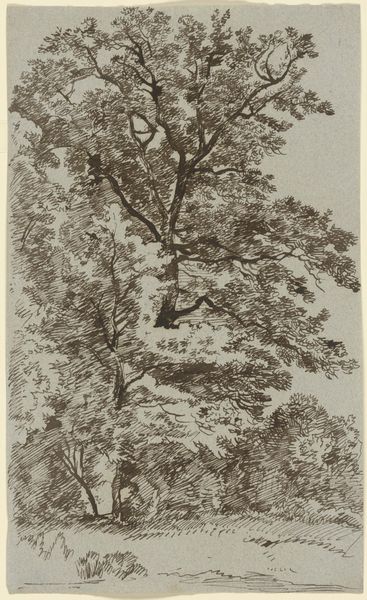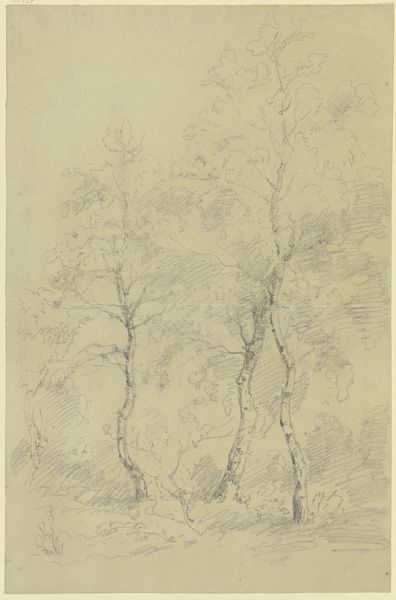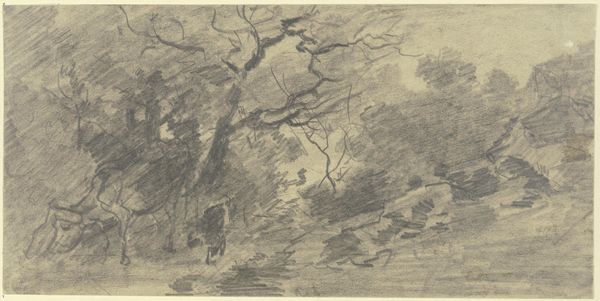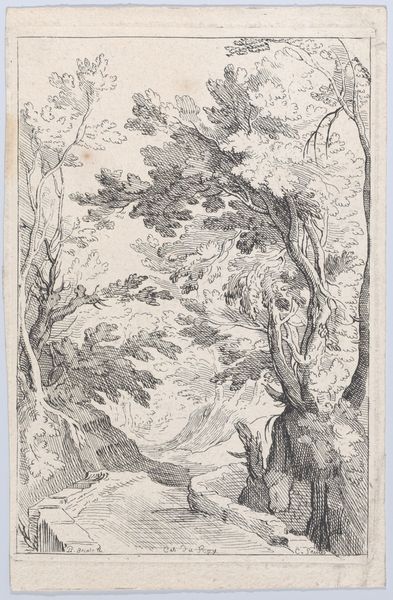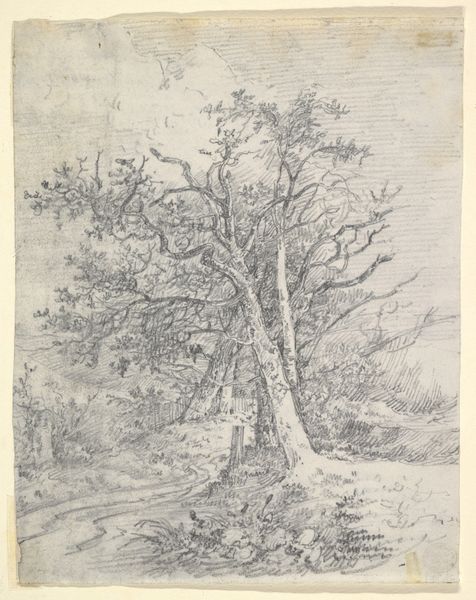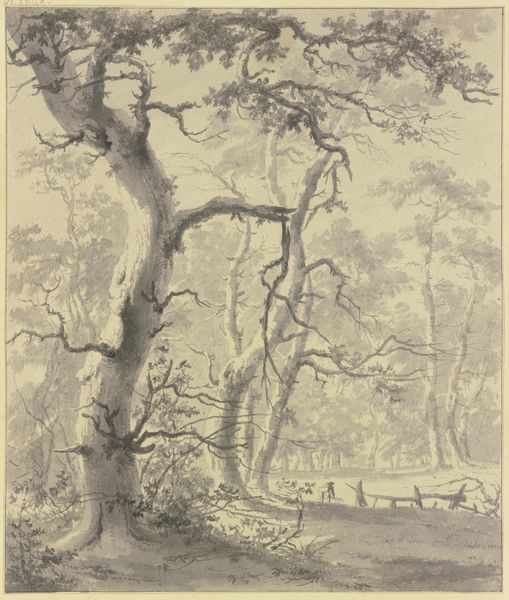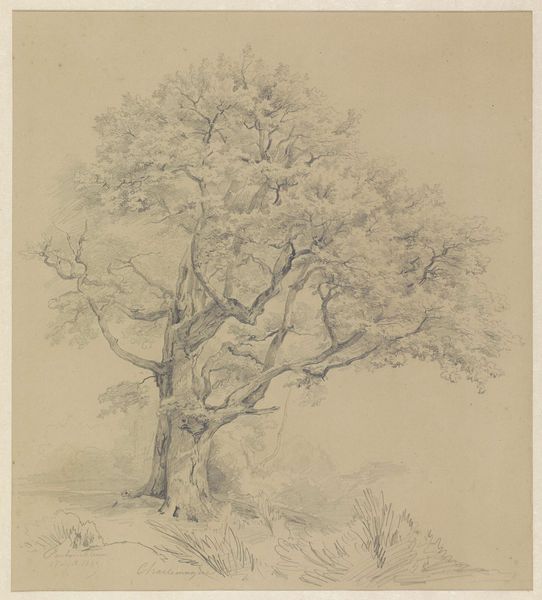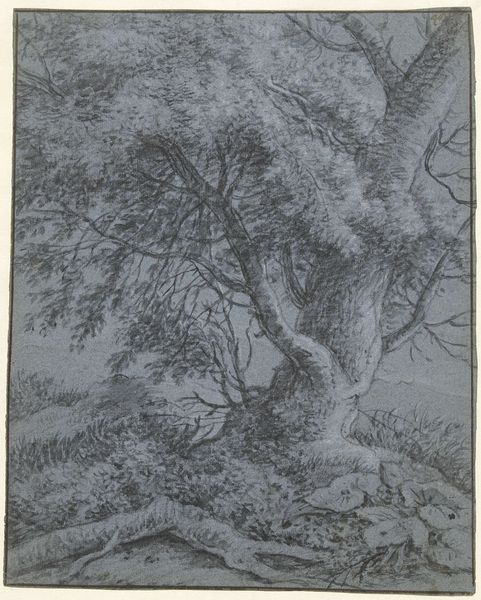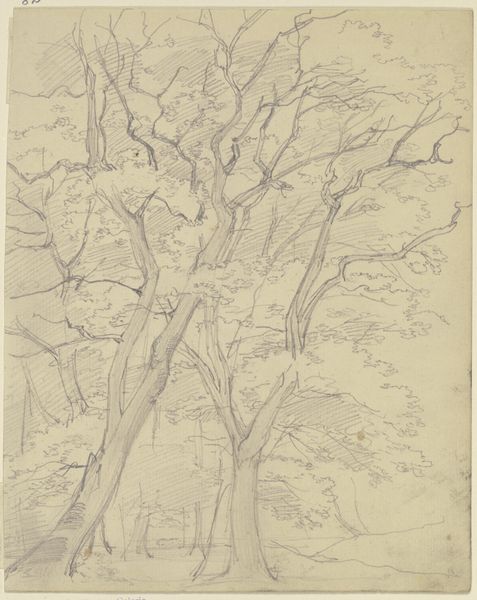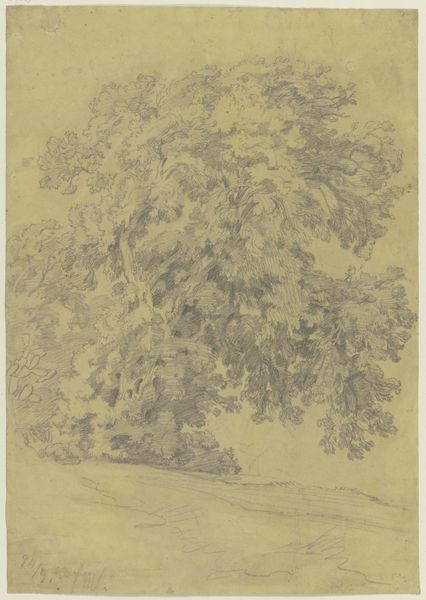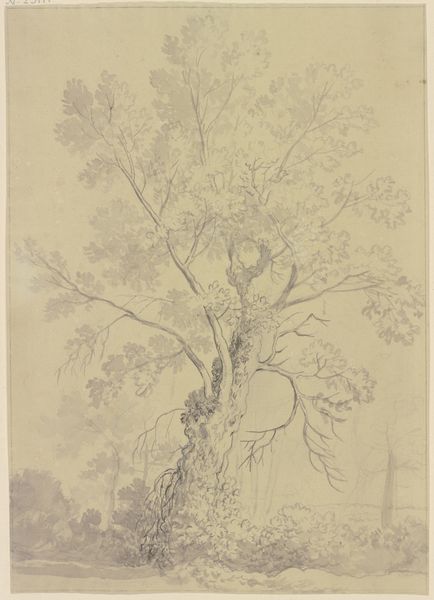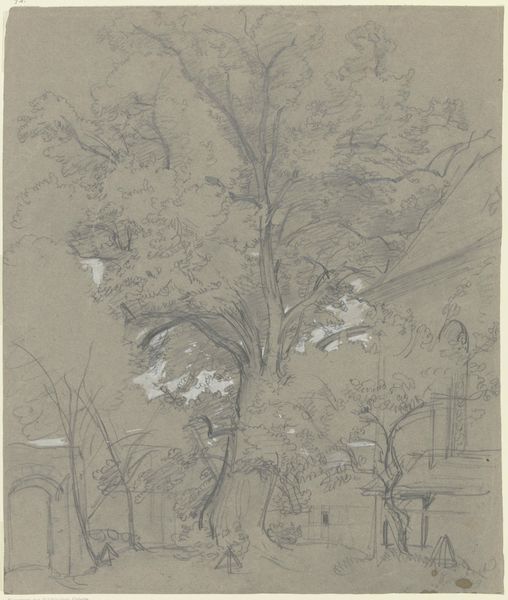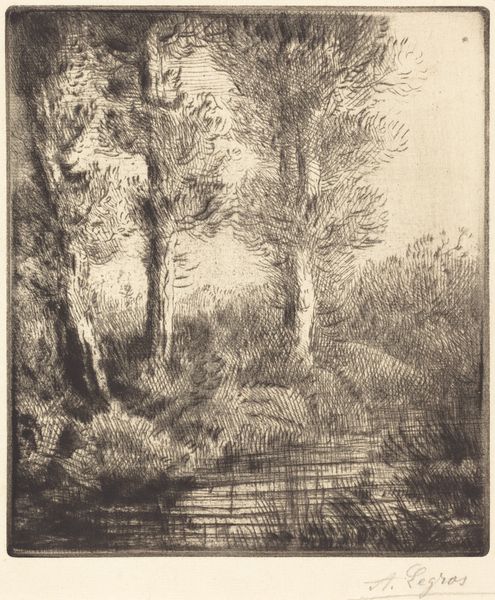
drawing, ink, chalk, graphite
#
drawing
#
landscape
#
ink
#
ink drawing experimentation
#
chalk
#
15_18th-century
#
graphite
Copyright: Public Domain
Curator: Welcome. Let's examine this intriguing landscape drawing entitled "Eine Waldpartie, inmitten ein Karren mit zwei Ochsen"—a woodland scene, with a cart and two oxen. It's by Gerard van Nijmegen and held here at the Städel Museum. Editor: Immediately, I'm struck by how peaceful the composition feels despite its intricate details. There's something very gentle about the way the light filters through the trees. Curator: Absolutely. Note the blending of materials: graphite, chalk, and ink. How does Nijmegen create such luminosity with this collection? Consider also the use of labor to create such scenes depicting workers; who, we wonder, purchased such works? Editor: The oxen and cart are small, but their placement deep within the landscape subtly hints at a slow, reliable movement through the land. It gives the picture a very Dutch feel of hard, understated work and rural perseverance. Curator: Yes, and beyond just being aesthetically pleasing, I see cultural connections through such images of pastoral life. The artist reminds his bourgeois client of land, and perhaps loss of land, labor and simple lifestyles through this choice of subject. Editor: Perhaps, or a memory held within the symbolism? Trees often represented cycles of life and nature's enduring strength. The weathered wood, though, with broken fence is maybe a hint to human intervention and a cycle not meant to be permanent. Curator: Good point, the inclusion of the cart shifts our interpretation from just the romantic or idyllic to acknowledge more regular processes of the period such as transportation of material. I think that speaks to a time when artists had an economic reliance on satisfying both their own practice and patron’s tastes. Editor: Ultimately, regardless of how he negotiated the pressures of art-making during the period, the effect of "Eine Waldpartie, inmitten ein Karren mit zwei Ochsen" is to convey a moment of stillness, broken only by the implication of a laborious journey. Curator: Precisely. Examining Nijmegen's techniques allows us to see how these landscape views reflected changing societal views on the material value of land. Editor: A valuable, detailed picture, brought into clearer view through that insight. Thank you.
Comments
No comments
Be the first to comment and join the conversation on the ultimate creative platform.
